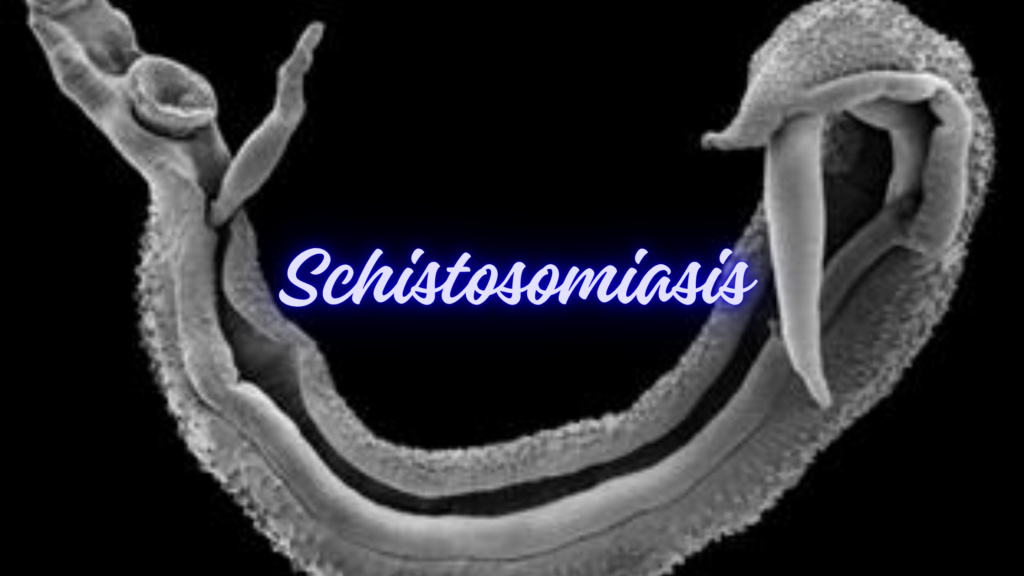🪱 Schistosomiasis (Bilharzia) – Overview
Schistosomiasis (also known as bilharzia) is a parasitic disease caused by blood flukes (trematode worms) of the genus Schistosoma. It affects millions of people, mainly in tropical and subtropical regions, especially in Africa.
🧬 Causes
Caused by Schistosoma species, mainly:
| Species | Affected Organs | Common Regions |
|---|---|---|
| S. haematobium | Urinary tract | Africa, Middle East |
| S. mansoni | Intestines, liver | Africa, South America |
| S. japonicum | Intestines, liver | East Asia (e.g., China, Philippines) |
| S. mekongi, S. intercalatum | Less common | Southeast Asia, Central Africa |
💧 Transmission
- Contact with contaminated freshwater
- Parasites enter the body through the skin when bathing, swimming, or wading in infected water
- Eggs are excreted in urine or feces, contaminating water
- Snails act as intermediate hosts where the larvae multiply
🔄 Life Cycle
- Eggs hatch in water → infect snails
- Snails release cercariae (larval stage)
- Cercariae penetrate human skin
- Mature into adult worms in blood vessels
- Adults lay eggs → eggs cause inflammation or are passed out in urine/feces
⚠️ Symptoms
1️⃣ Acute Schistosomiasis (Katayama fever):
- Fever
- Chills
- Cough
- Muscle aches
- Eosinophilia (high eosinophil count)
2️⃣ Chronic Schistosomiasis (after months/years):
- Intestinal schistosomiasis:
- Abdominal pain
- Diarrhea or blood in stool
- Liver and spleen enlargement
- Fibrosis or portal hypertension (in severe cases)
- Urogenital schistosomiasis (S. haematobium):
- Blood in urine
- Painful urination
- Bladder damage
- Risk of bladder cancer
- Infertility (in chronic cases)
🧪 Diagnosis
- Microscopy: Detect eggs in stool or urine
- Serology: Detect antibodies (useful in travelers or light infections)
- PCR: For sensitive molecular detection
- Ultrasound: To assess organ damage (especially liver and bladder)
💊 Treatment
- Praziquantel: Single-day oral treatment (safe and effective for all species)
- Often repeated after a few weeks in heavy infections
🛡️ Prevention
- Avoid swimming or bathing in freshwater bodies in endemic areas
- Improve access to clean water and sanitation
- Mass drug administration (MDA) in schools and communities in endemic areas
- Snail control: Use of molluscicides and environmental management
🌍 Global Burden
- Over 230 million people infected worldwide (most in Africa)
- Especially affects children and agricultural workers
- WHO targets elimination as a public health problem
✅ Key Points
- Schistosomiasis is treatable and preventable
- Chronic infections can cause organ damage and disability
- Early diagnosis and community-wide control are critical
